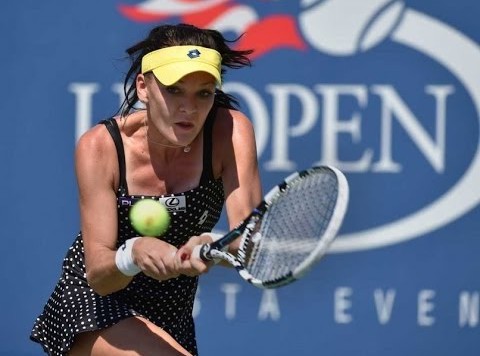The biggest story from day three of the U.S. Open emerged in the women’s singles event, as Agnieszka Radwanska, the No. 4 seed in the draw and a player given a more-than-reasonable path to the semifinals, crashed out in the second round to Peng Shuai. The relatively meek 3-and-4 loss won’t eliminate the satisfaction Radwanska gained by winning in Montreal a few weeks ago, but this immense disappointment in New York recasts that journey in Canada. The routine loss to Peng diminishes the long-term importance of Montreal in Radwanska’s 2014 tennis season. What could have been a turning point instead became a blip on the radar.
*
Nearly three months ago, Ana Ivanovic lost to Lucie Safarova in the third round at Roland Garros. One of the major storylines heading into that match was that Safarova had enjoyed success in most of her recent meetings against Ivanovic. It’s true that Ivanovic had been enjoying a fabulous 2014 season up to that point, but a tricky matchup posed a potential problem for the in-form player from Serbia.
Sure enough, Ivanovic couldn’t handle a nemesis or the larger pressure of the moment. Attacking The Net examined that loss and underscored why great players manage to overcome pesky opponents, at least when the moment matters most. Ivanovic’s failure so clearly demonstrated why, for all of the successes she’s enjoyed at non-major tournaments this year, her loss to Safarova represented a telling indication of the extent to which she’s not ready to do well at the biggest tournaments on the tennis calendar.
It is in this respect that Radwanska’s loss to Peng feels very similar to Ivanovic’s loss to Safarova in Paris.
Matchups do matter in sports. They matter very much in tennis as well. Just ask Roger Federer when Rafael Nadal arrives in the semifinals of a tournament. Just ask any of the players who have never beaten Federer in at least five or six (if not 10 or 15) head-to-head meetings. Ask Maria Sharapova when she has to play Serena Williams. Ask Dominika Cibulkova when she plays Sam Stosur. Ask Kevin Anderson when he plays Tomas Berdych. Draws put certain players in the paths of others, and these twists can and do affect tournament outcomes.
Yet, for all the ways in which even the top players in the sport might be bothered by a given opponent, they don’t allow being bothered to become something worse when an inferior opponent stands on the other side of the net. Roger Federer doesn’t coast to wins against David Ferrer, for instance. Federer stood on very shaky ground entering the final and decisive set of recent matches against Ferrer in both Toronto and Cincinnati, but he found a way to win. He was bothered, but not to the breaking point.
Maria Sharapova constantly loses first sets and struggles to calibrate her groundstrokes against hard-hitting opponents. She often gets bothered on the court, but not to the breaking point. Serena Williams and Victoria Azarenka have displayed even better fighting capabilities on court over the past few years. They will struggle on plenty of occasions, but in most situations, they overcome those on-court hardships. That, right there, is what major champions do. That’s the mark of truly elite players.
It’s no sin to struggle. That’s what it means to be an imperfect, mortal, and fully human being.
It’s what a player does in the midst of (and in response to) the struggle that reveals the full measure of his or her capacity to surmount all obstacles and become the last player standing at the end of two weeks of mortal tennis combat.
Yes, Agnieszka Radwanska entered her match with Peng Shuai with a negative head-to-head record. There’s no denying that fact. Yet, Radwanska had actually achieved something of considerable value in Montreal and had produced a solid summer hardcourt run. Peng’s only significant main-draw performance in an important tournament in 2014 came at Wimbledon. Her record of achievement this year is almost entirely barren outside of one strong week at SW19.
Radwanska didn’t have to win in a pretty way. She didn’t have to accumulate style points or offer a masterclass in New York. She didn’t have to “look impressive” or “dominate.”
She, like Ivanovic against Safarova at Roland Garros, needed to win.
She didn’t.
We might find ourselves remarking in the summer of 2015 about Radwanska’s breakthrough at a major. Serena could remain inconsistent, Sharapova might get knocked out in the quarterfinals, Ekaterina Makarova might be in the opposite half of the draw, and Azarenka could lose a close semifinal, enabling this 25-year-old to win one of 2015’s first three majors. Things change quickly in tennis, a disclaimer that always has to be applied to this sport, whose lifespans for vibrant careers are conspicuously brief.
Yet, with all those disclaimers and possibilities having been mentioned, would you make Agnieszka Radwanska a top-five contender for any major tournament in 2015?
Exactly. I wouldn’t either.

